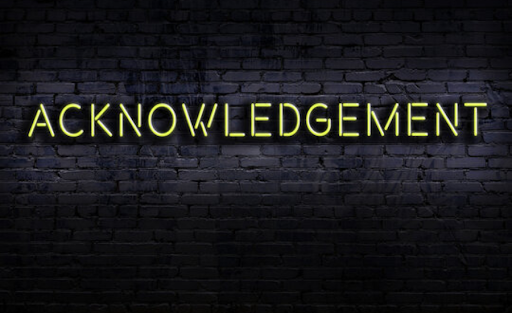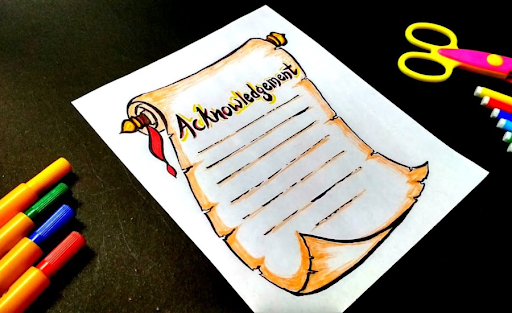Acknowledgement in the Age of Social Media: Who Do We Thank and Why?
In the past, acknowledgements were mostly found in books, speeches, and formal events. Today, they’ve taken a new shape — shaped by the culture and immediacy of social media. Whether it’s a shoutout in an Instagram story, a credit in a viral TikTok, or a heartfelt tweet, the way we acknowledge others has evolved. It’s more public, more performative, and often more complicated. But in this hyper-connected world, one thing hasn’t changed — people still want to feel seen and appreciated.
So, who do we thank in the age of social media, and more importantly, why does it matter? This article explores the meaning, motivations, and impact of public acknowledgements in the digital age.
Acknowledgement in the Digital Era: Redefining Gratitude
On social platforms, acknowledgement has become a currency. A tag, mention, or repost can mean exposure, validation, or even financial opportunity. But it’s also about basic human appreciation — publicly thanking someone for their role in your life, your work, or your success.
Unlike traditional thank-yous, social media acknowledgements are often immediate and wide-reaching. They go beyond simple recognition and can shape public narratives about relationships, influence, and collaboration.
The Rise of Digital Thank-Yous: Where and How They Appear
There are multiple forms of acknowledgement across platforms, each with its own tone and purpose.
1. Tags and Mentions
A tag in a post or story is perhaps the most common form. Whether it’s a friend who took the photo or a makeup artist for a shoot, tagging people has become shorthand for gratitude.
2. Credits in Captions or Comments
In creative communities like photography, design, and music, giving credit in captions is expected. “Shot by,” “Styled by,” and “Produced by” are forms of digital acknowledgment that establish credibility and respect.
3. Collaboration Posts
Instagram and TikTok now offer shared posts or “collabs,” allowing both parties to be credited at the top. This formalizes acknowledgment and merges audiences — a gesture of mutual appreciation and visibility.
4. Thank-You Threads and Posts
On platforms like Twitter or LinkedIn, users create long-form thank-you messages after milestones — graduating, publishing a book, launching a business — publicly naming those who supported them.
Why We Acknowledge: The Motivations Behind the Gesture
Acknowledgement has always been tied to emotion and etiquette, but social media adds layers of personal branding, visibility, and social positioning.
1. Genuine Gratitude
Many acknowledgements stem from sincere appreciation. Publicly thanking someone — whether it’s a teacher, collaborator, or friend — is a way of showing respect and kindness.
2. Community Building
Acknowledging others helps build and strengthen digital communities. It signals that you value participation and teamwork, which often leads to deeper engagement and collaboration.
3. Networking and Reciprocity
Sometimes acknowledgements are strategic. Tagging or crediting someone with a larger following may bring more exposure. In creative and professional circles, this type of acknowledgment can lead to partnerships or new opportunities.
4. Social Validation
Public acknowledgements also serve the person giving them. Gratitude posts can enhance one’s image as thoughtful, humble, or well-connected. In the influencer space, it’s often part of reputation-building.
Who Deserves Acknowledgement Online?
In a time when many collaborations are virtual and informal, deciding who to thank — and how — can be complicated.
1. The Creative Contributors
Photographers, videographers, editors, stylists, and assistants often work behind the scenes. Public credit acknowledges their contribution and respects the time and effort behind polished content.
2. Emotional and Social Supporters
Acknowledging personal support — from family, partners, mentors, or friends — is common in milestone posts. It humanizes success and reminds audiences that no one achieves big goals entirely alone.
3. Inspiration and Influence
Creators often acknowledge those who inspired their content. This might be a trend originator, a quote source, or an artist whose work influenced the final product.
4. Sponsors and Brand Partner
In influencer marketing, brands are routinely acknowledged through tags or hashtags. Transparency is not only ethical but often required by platform guidelines and advertising standards.
The Ethics of Acknowledgement
In some circles, failing to acknowledge someone can be seen as disrespectful or even exploitative. This is especially true in creative industries where the line between inspiration and imitation can be thin.
1. Giving Credit Where It’s Due
Proper attribution matters. Using someone’s work or ideas without acknowledgment is considered unethical and can lead to backlash or legal consequences. A simple tag can prevent misunderstanding and preserve professional relationships.
2. Public vs. Private Recognition
Not everyone wants public acknowledgment. Some people prefer quiet appreciation over a social media spotlight. When in doubt, it’s respectful to ask whether someone wants to be mentioned or kept in the background.
3. Tokenism and Performative Thanks
Acknowledging someone just to appear inclusive or thoughtful — without real appreciation — can feel hollow. Audiences are increasingly aware of performative behavior, and insincere gratitude can backfire.
How Acknowledgement Shapes Online Culture
The act of public gratitude contributes to the tone and texture of social media culture.
1. Encourages Positivity
In a space often dominated by outrage and criticism, acknowledgements shift the mood. They remind users that social media can be a place for appreciation and encouragement.
2. Highlights Collaboration Over Competition
Acknowledging others emphasizes cooperation and shared success. This counters the competitive nature of follower counts and algorithm-driven content.
3. Sets a Norm for Credibility
When users consistently credit others, it sets a cultural expectation — especially in creative and academic communities — that attribution is part of ethical content sharing.
Acknowledging the Unseen
Some contributors never get public credit, either because they’re part of invisible labor (like content moderation or technical support) or because they’re left out of narratives that focus only on the front-facing individuals.
Advocating for more inclusive acknowledgements helps broaden recognition. From interns to caregivers, from community members to research assistants, everyone’s contribution matters.
Final Thoughts
In the age of social media, acknowledgement has become more than just a polite gesture. It is a public act of gratitude that can shape relationships, reputations, and even careers. As our digital interactions grow more complex, so does the responsibility of recognizing those who help us succeed, inspire us, or simply show up when we need them most.
The next time you post a milestone, share a creative work, or publish a collaboration, pause and ask yourself — who helped make this possible? Who supported me, challenged me, or stood by me? And how can I thank them in a way that’s both thoughtful and authentic?
In a world where attention is currency and visibility is power, a meaningful acknowledgment can go a long way. Not just in gaining likes or shares, but in honoring the real connections behind the screen.





